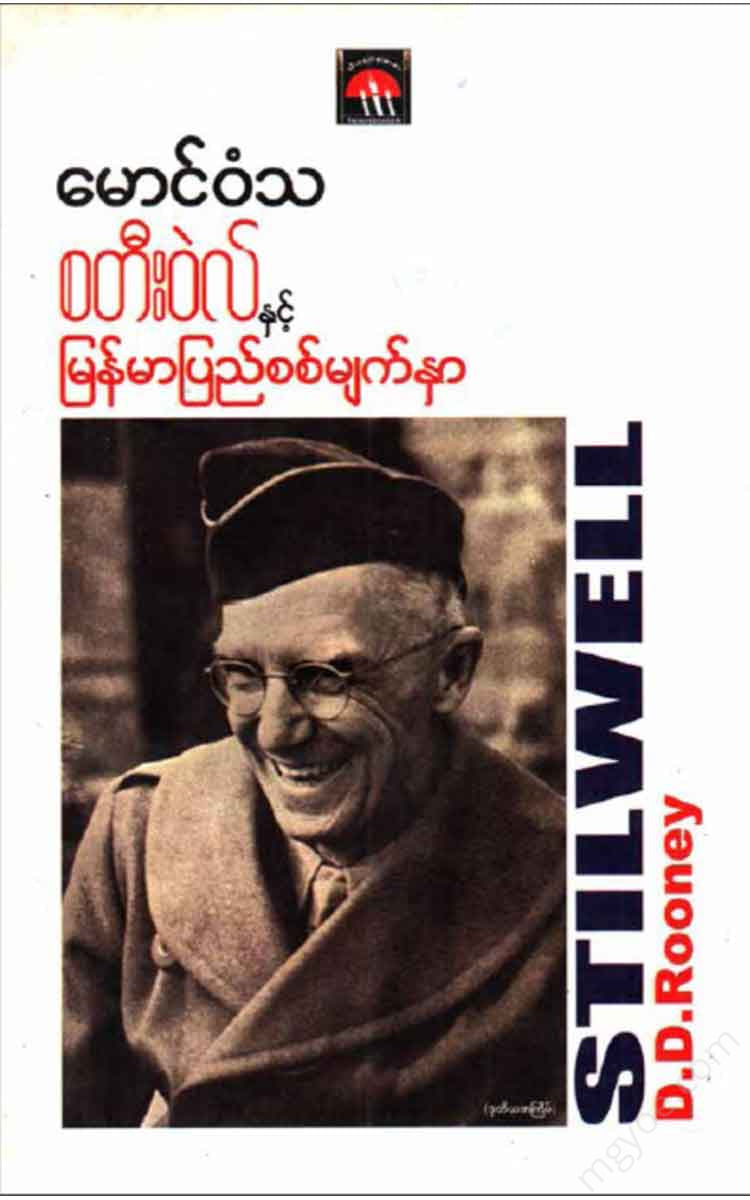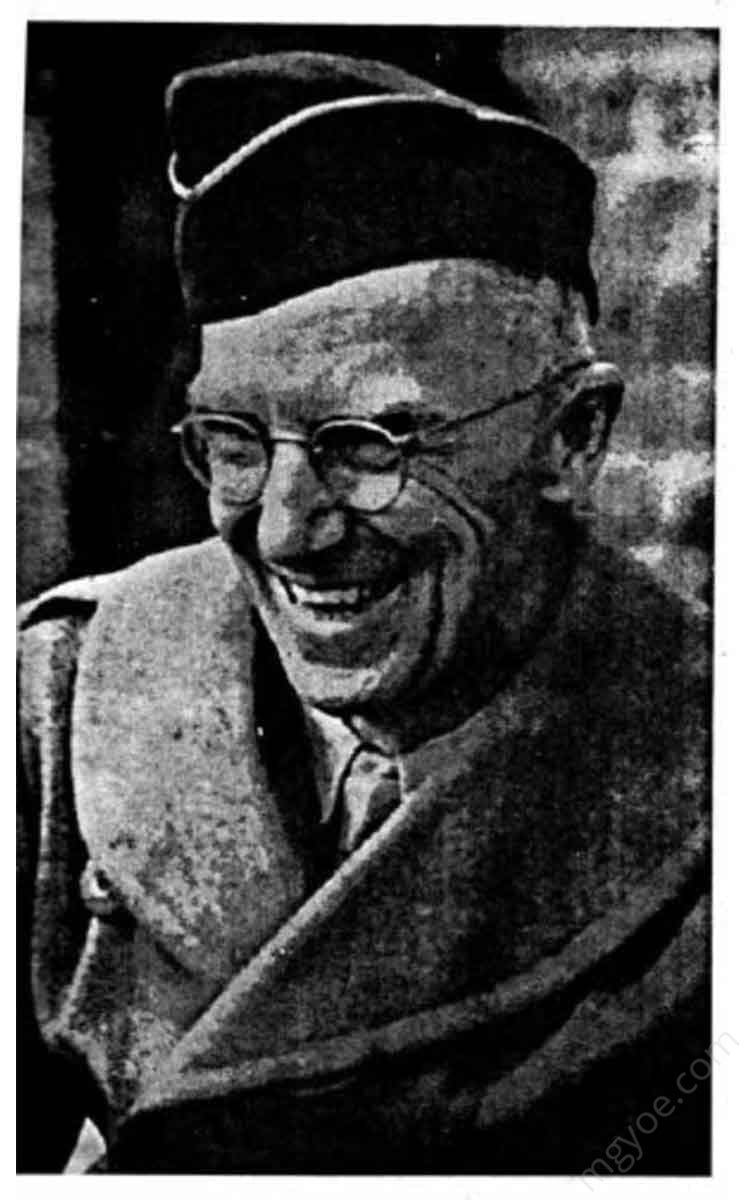Other Websites
Maung Wan Tha - Steelwell and the Burma Front
Maung Wan Tha - Steelwell and the Burma Front
Couldn't load pickup availability
Stilwell (or) a victim of political intrigue
Among the prominent military commanders of World War II, American General Joseph W. Stilwell, who served on the China, Burma, and India fronts, left behind a controversial history.
During World War II, there were many generals who served as commanders of the Allied forces, some of whom were unlucky, some of whom were dismissed. Of these, General Patton, who was on the European front, was fortunate despite his loss. Patton was recognized as a military hero. He was often spoken of and written about with great praise.
But General Stilwell was one of the most unfortunate generals. He was in charge of one of the most neglected fronts of the American government during World War II. The armed forces he commanded were the formidable Chinese troops of Chiang Kai-shek.
Stilwell's main combat experience was the defeat and withdrawal from Burma in 1942, and until his dismissal in October 1944, he spent the rest of his time at odds with the Chinese leader Chiang Kai-shek. As Chiang Kai-shek's commander-in-chief, Stilwell advised Chiang Kai-shek on operations to repel the Japanese offensive, but to no avail. This book shows how General Stilwell, a military genius and visionary, was caught between diplomatic malfeasance and political astuteness.
To understand the problems Stilwell faced as Chiang Kai-shek's commander-in-chief and as an American commander on the battlefields of China, Burma, and India, it is necessary to know the background of the situation in China in 1942.
In 1942, China was fighting against Japanese forces. Since the Japanese invasion of Manchuria in 1931, China had been engaged in sporadic, sporadic, and sporadic fighting. The fighting with the Japanese intensified after 1937. In 1937, the Communist Nationalists formed a loose "United Front." However, this anti-Japanese organization broke up in 1941 after conflicts broke out in central China. The "United Front" was unable to stop the Japanese.
In 1939, the Japanese occupied the Chinese coastal areas. They also occupied important ports. As a result, the Chinese were forced to use Burma as their only outlet to communicate with the outside world. To communicate with the outside world, they had to use the highway built from Yangon to Yunnan Province.
However, after 1939, the Japanese did not advance further into China. They withdrew their troops to other fronts. Then, in 1940, the Japanese invaded Indochina and in 1942, Burma.
When Stilwell arrived in 1942, China was divided into three parts: the coastal region occupied by the Japanese, the western Shanghai region dominated by the Communists led by Mao Zedong, and the southwestern Chongqing region, where the Nationalists led by Chiang Kai-shek were firmly in power. The Japanese had their own defenses. The Communists had their own troops, and the Nationalists had their own forces.
The Soviets and the Americans considered Chiang Kai-shek to be the true leader of China. In reality, Chiang Kai-shek was no more than a leader who could only exert power in his own small area. Chiang Kai-shek's troops could only dominate in their own area. Not only was he politically inexperienced, but there was also a lot of corruption in the Chiang Kai-shek group. .
When Stilwell served as the U.S. military attaché to China before 1940, Chinese troops were being attacked by German and Russian forces.
They were trained and armed. Japan, Germany, and Russia cooperated with each other in 1940.
When it came to that, Chiang Kai-shek turned to the Americans for help. Chiang Kai-shek and his brother-in-law, Ti-Phan, asked the Americans for weapons and ammunition, especially airplanes.
Chin, a retired U.S. Air Force officer who had been in China since 1937, believed that China could only fight back against the Japanese and launch an offensive if it had an air force.
Although the Americans distrusted the military capabilities and morale of Chiang Kai-shek's Chinese troops, American involvement in China increased.
After the Japanese attack on Pearl Harbor in December 1941, President Roosevelt recognized Chiang Kai-shek as the commander-in-chief of the Allied forces on the Chinese front. Then, in February 1942, Stilwell was sent to serve as Chiang Kai-shek's chief of defense.
This book describes how Stilwell faced difficulties under Chiang Kai-shek, how all his plans and efforts were in vain. Chiang Kai-shek said on the one hand that the war could be won without American help, and on the other hand that the Japanese could be driven out with American air support. One can imagine how difficult it would be for Stilwell to be under such a double-minded and double-minded man.
Some American military advisors believed that the American aid the Chinese wanted would be used not to drive out the Japanese but to attack the Communists and to influence Chiang Kai-shek's Kuomintang nationalist commanders in the region. Stilwell understood that Chiang Kai-shek was concerned that his declining political position would be undermined by ground attacks on Japanese forces.
Chiang Kai-shek, like Chin, wanted to use the air to attack the Japanese. Stilwell said that if he did so, he would risk inciting the Japanese to attack after 1943.
Stilwell was a man of deep and difficult character. The British commander-in-chief, General Salem, had a good understanding of Stilwell. Salem not only liked Stilwell but also trusted him. Salem knew that Stilwell would not work with politicians he did not like. Stilwell was a person of integrity and likability. However, in his dealings with others, including his subordinates, General Salem noted that he was too harsh, too blunt, and too blunt.
Stilwell's experiences in military, diplomatic, and social relations are worth learning from in all aspects, as can be seen in this book.



